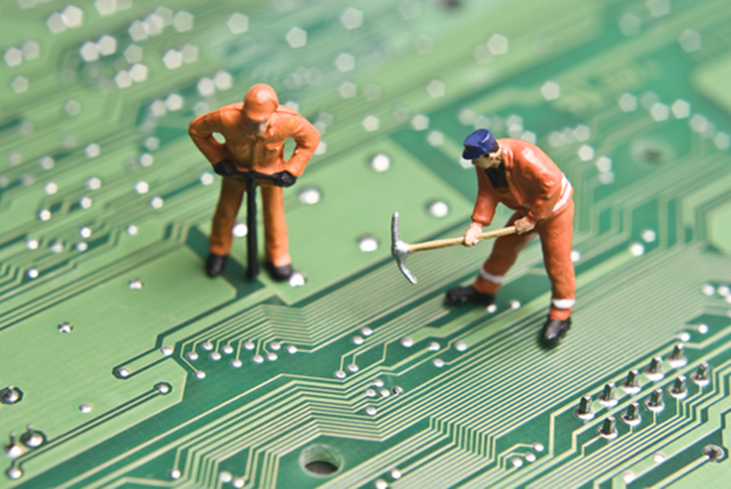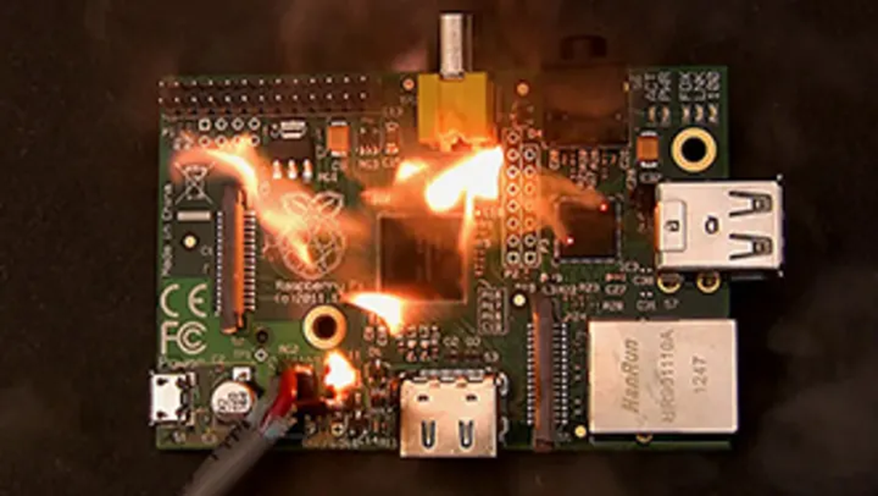Embedded Baremetal
Note
This is a work in progress.
Introduction
This workshop is designed to explore the fascinating world of baremetal programming, where you’ll learn to operate software that runs directly on the hardware. We’ll start by understanding what baremetal programming is and why it’s important. Through interactive demonstrations and hands-on activities, you’ll gain practical experience and see how these concepts apply to real-world projects. Let’s dive in and start our journey into the world of embedded systems!
Theoretical content
Baremetal Background
What is no-OS
no-OS Device Drivers
No-OS API and Platforms
No-OS Projects
IIO Concepts
ADXL355 part
NO-OS Device Drivers Takeaways
Hands-on Activity
Baremetal Background
Traditionally, industry chip manufacturers would sell ICs without accompanying software:
Chip
Datasheet
Pseudocode with an initialization sequence and/or sequence of data acquisition
Complex parts require complex software.
ICs are everywhere.
ADI addressed this issue and started providing software for its parts as well.
There is a market advantage in selling parts with accompanying software.
Baremetal projects deliverables 10 years ago consisted of:
A .zip file containing the driver files
A .zip file containing a project
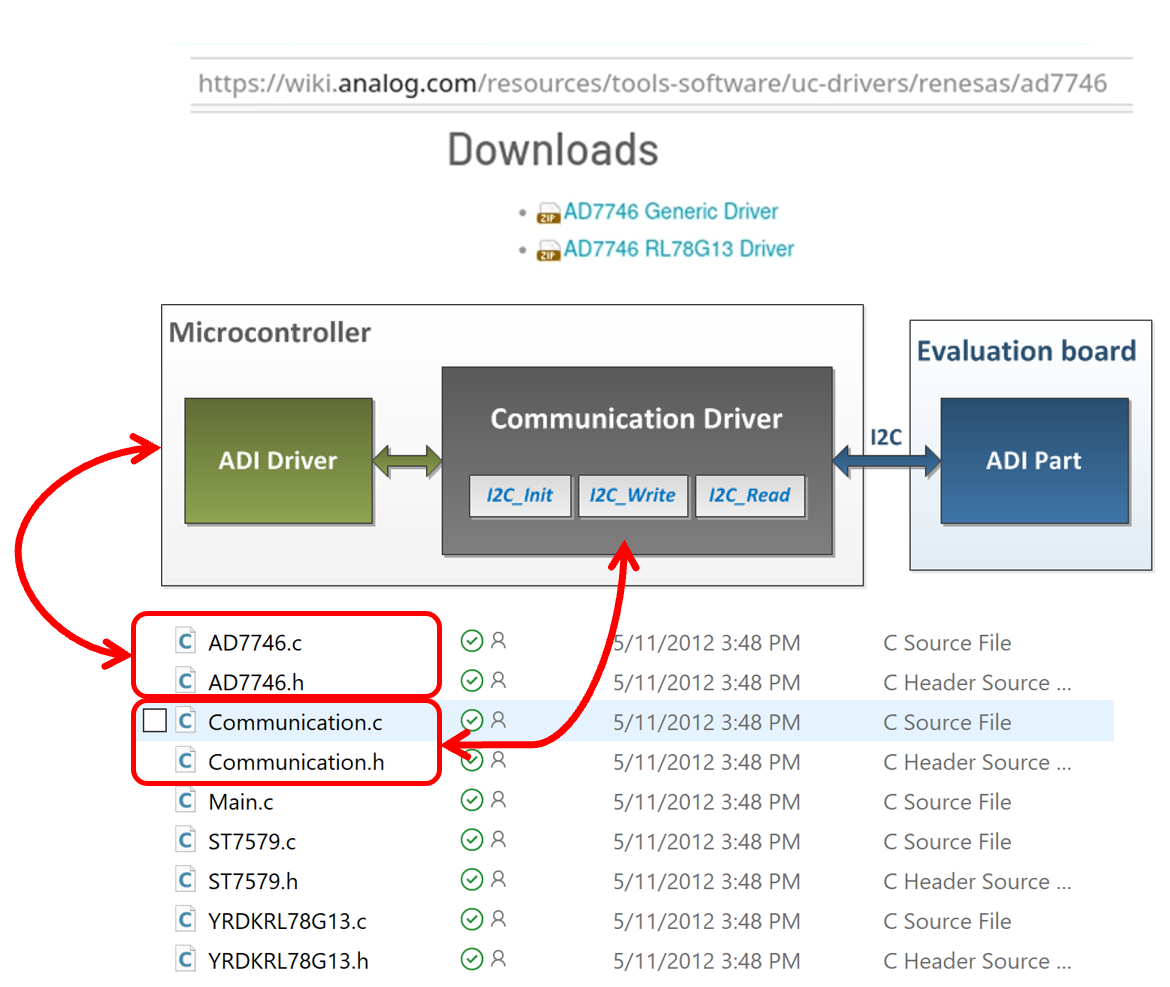
What ADI tried to do back then was to write an ADI driver for an ADI part, provided that we were selling the evaluation board with ADI part on it The communication driver would be specific for each microcontroller or system board we would use: Maxim, Microchip, STM, etc The structure was mainly containing buffers instantiations and functions calling The users would have to fill-in the code with their specific functions
The initial approach had two targets:
Provide bare-metal ADI drivers for ADI parts to users
Leverage the driver code in a reference project running on hardware
Advantages
Driver code was MCU independent
Disadvantages
Customer responsibility to port reference project on a different MCU
.zip file distribution led to no version control and code duplication
Evolution provided
Provide a way for reference projects to run on multiple hardware combinations
Provide a build system that generates binaries and run them on hardware
Expose parts as IIO devices to PC applications
Improve code quality
What is No-OS
A software framework for embedded bare-metal development
Open-source
ADI-BSD license
Free
Large collection of platform agnostic device drivers for ADI parts
Significant collection of reference projects leveraging ADI evaluation boards
Reference projects can run on a wide range of hardware
Provides IIO enabled devices, making them accessible to PC applications that use libiio
What is a No-OS device driver
No-OS device driver provides a software interface to hardware devices. Software application can access hardware functionality without knowing in detail how the driver operates: register map, bit fields, are directly handled by the driver, as well as communication interface specific sequences and timings
A piece of code implemented in C, in a .c and .h pair, stored under /drivers on repo
Its programming interface is directly called by the application code
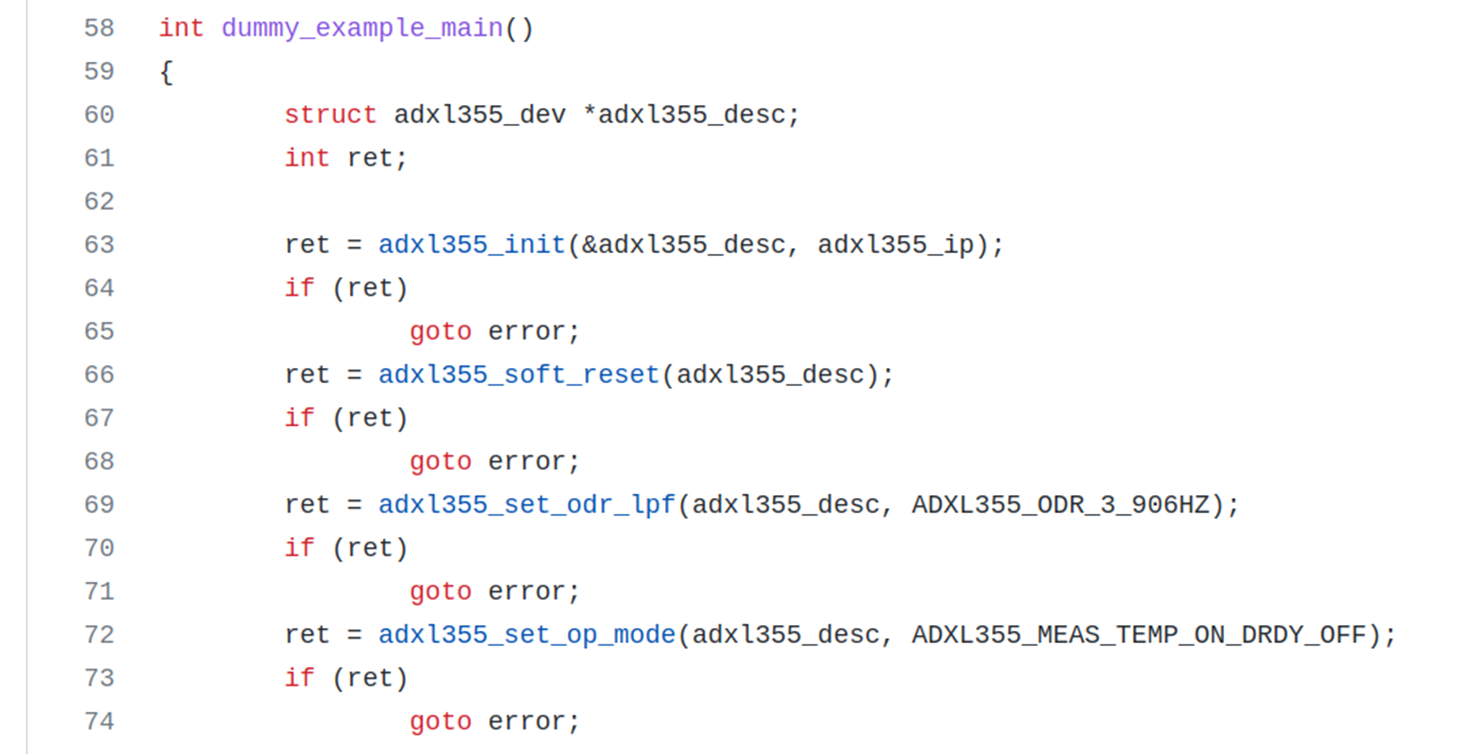
Defines its own descriptor structures and init_param
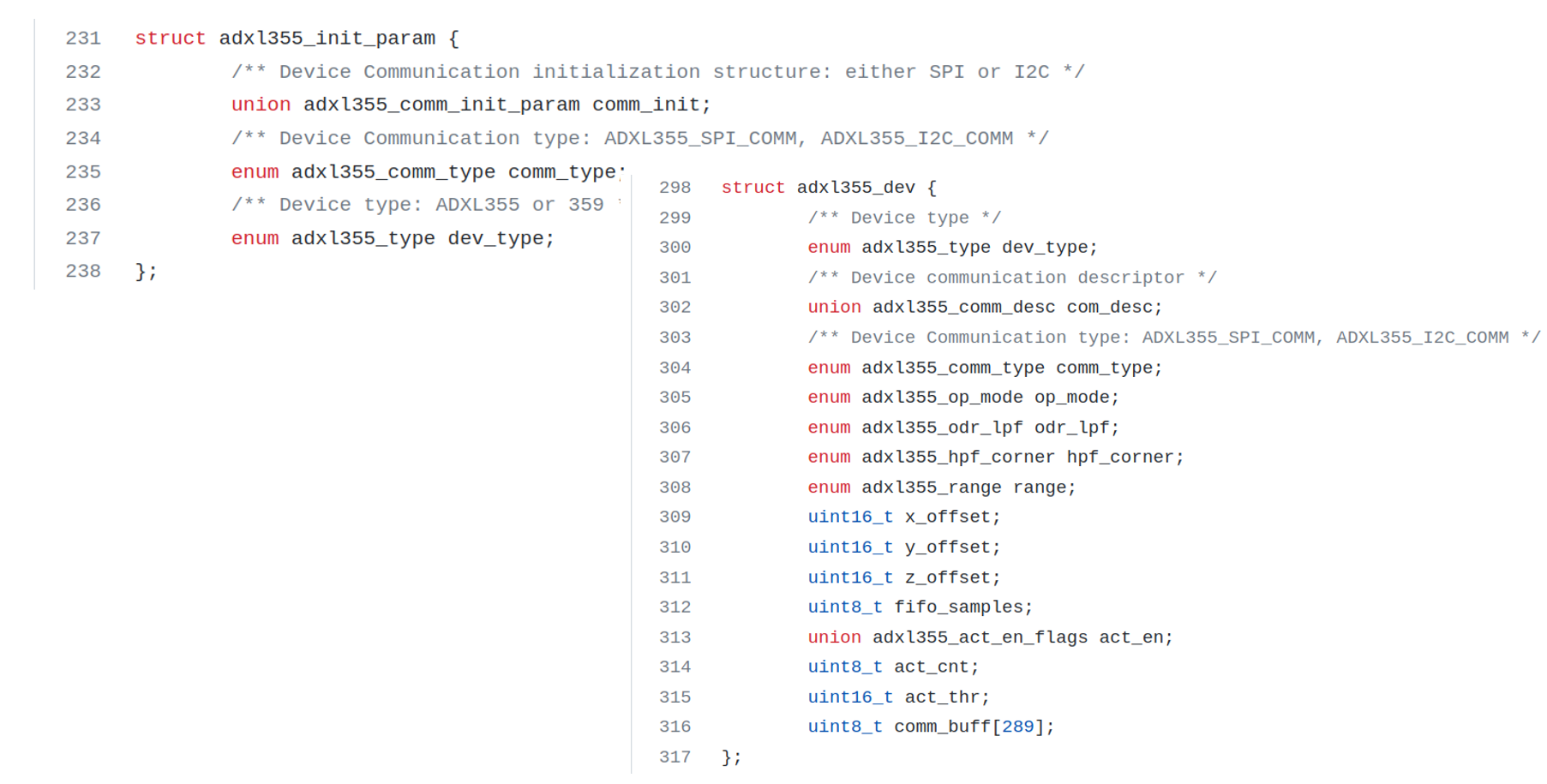
Contains minimum init() and remove() functions - take as parameter the specific init_param structure
Puts the devide into the desired state Allocates memory Provides the descriptor for being called in other driver function calls, the remove functions frees the resources allocated by the init()

Performs no-OS API calls, does not perform platform specific function calls, it’s platform agnostic
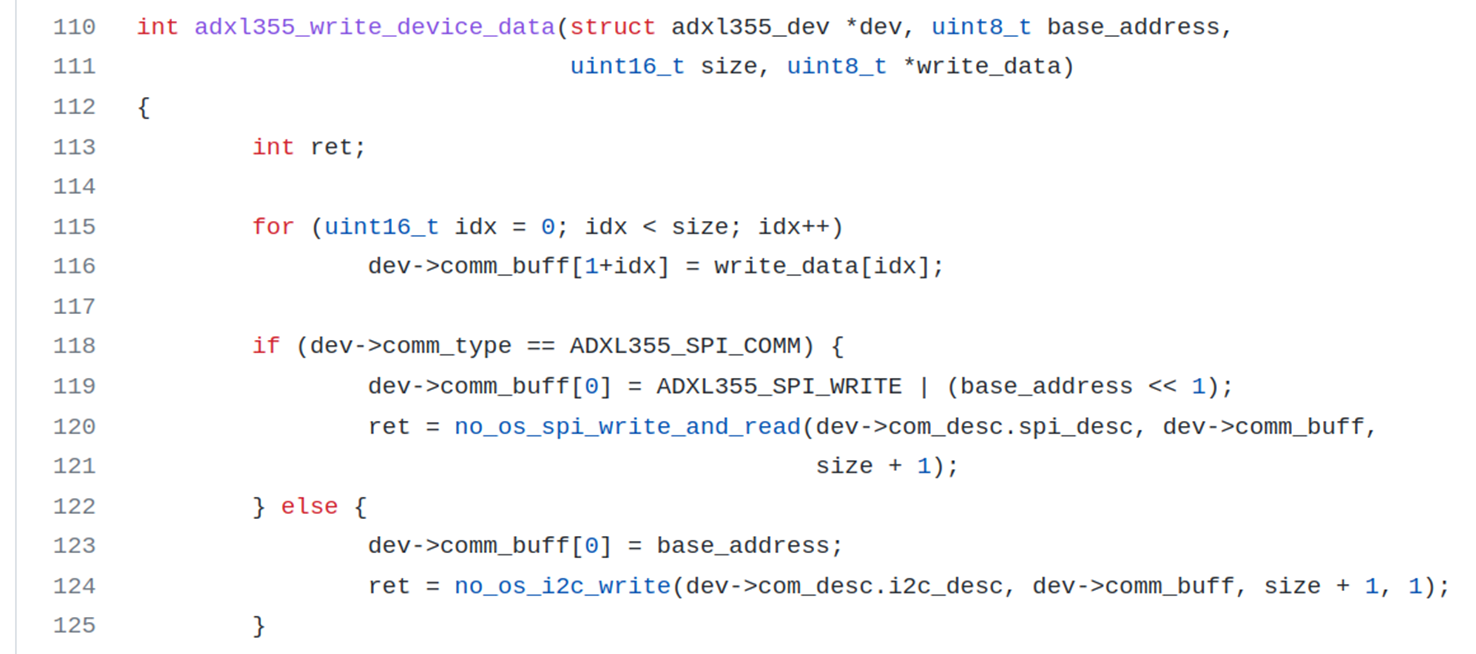
Software application can access hardware functionality without knowing in detail how the device operates
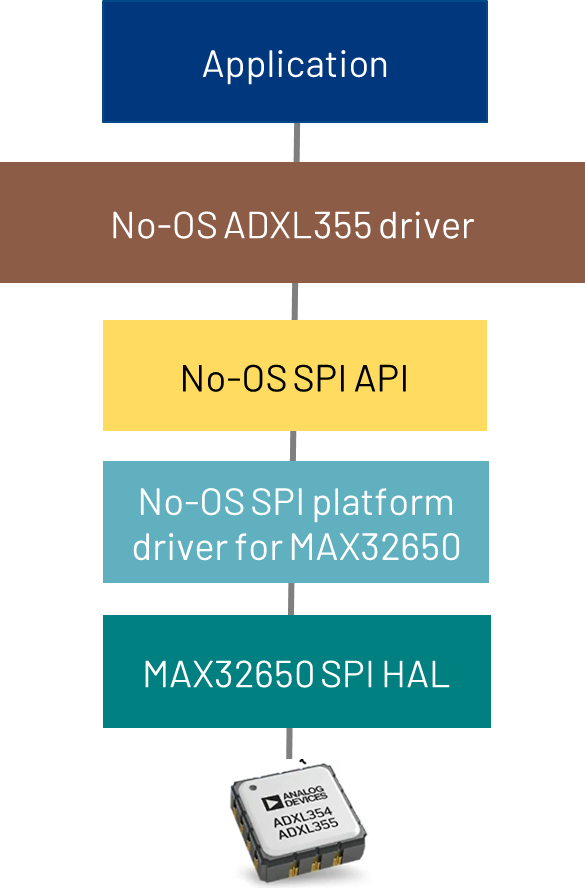
No-OS Platforms
Platform drivers – represent an implementations of peripheral related no-OS API on a specific platform Platform drivers use vendor HAL - Hardware Abstraction Layer No-OS platform drivers are implementations of peripheral no-OS API on a particular platform.
No-OS modularity allow it to run a lot of its code on different platforms like:
Xilinx (Zynq7000, ZynqMP, Microblaze)
Maxim (32650, 32655, 32660, 32670, 78000), ADuCM (3029)
STM32 (almost any)
RaspberryPi Pico
Mbed
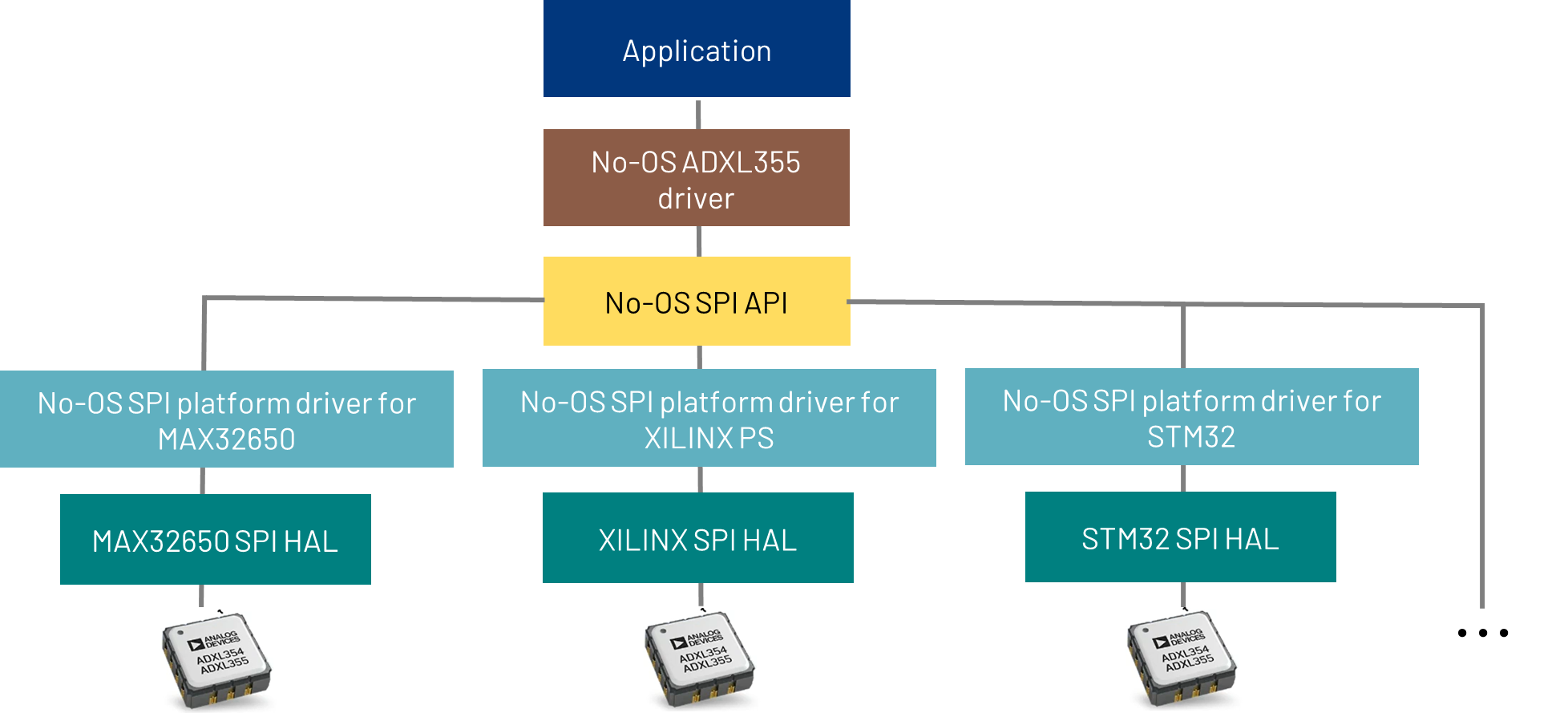
No-OS Projects
A project is basically an application that can be built, run and debugged on hardware
Specifications:
Located under projects/
It has a main() function
It uses drivers/ and drivers/platforms directories
It uses no-OS API
It uses various libraries
User interaction – serial, iio-oscilloscope
makefiles
Project hardware typically is made of:
An evaluation board
A carrier board
No-OS projects are used for
ADI parts evaluation
Starting development based on a no-OS project
IIO Concepts
What is IIO – is a framework in the Linux kernel designed for devices such as adcs, dacs, etc.. There is a tree concept inside kernel, there is the context concept which is specific to a board and has a set of drivers Context has a backend associated with it, it can be local or remote Is has an attribute associated with it – give various descriptions of the board: name, version, etc. Underneath the context comes the device, specific to the board and has also attributes, along with debug attributes – components you normally don’t interact with and require extra configuration or settings – ex. Advanced adc settings Each device has two components - buffer and channel – buffer is associated with data Channel represents the number of paths for signal to be acquired/generated
The Linux Industrial I/O (IIO) subsystem is intended to provide support for devices that, in some sense, are analog-to-digital or digital- to-analog converters Devices that fall into this category are: - ADCs - DACs - Accelerometers, gyros, IMUs - Capacitance-to-Digital converters (CDCs) - Pressure, temperature, and light sensors, etc. - RF Transceivers (like the AD9361 / AD9364 / AD9371 / ADRV9009) - It can be used on ADCs ranging from a 1MSPS SoC ADC to >5 GSPS ADCs
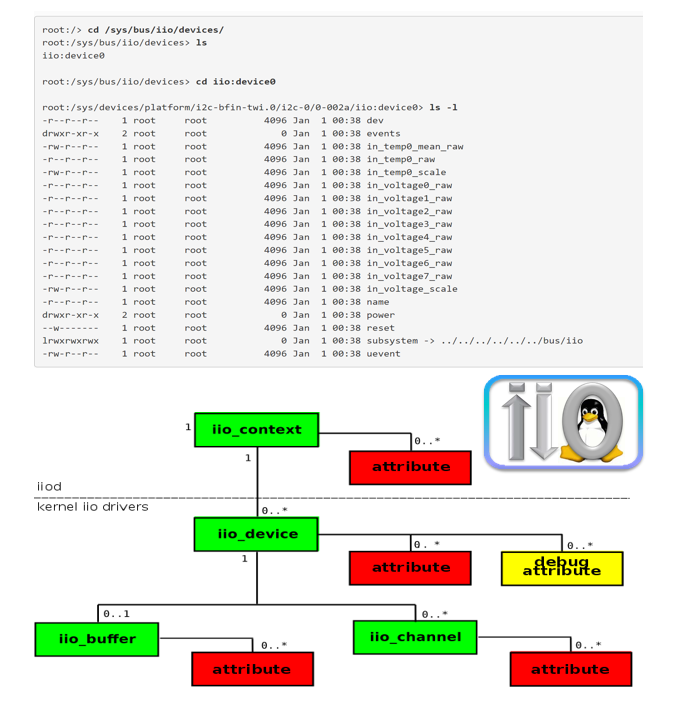
Libiio
It’s written in C, but has bindings in Python, C++, etc. All the high-level apps that talk to libiio are built on top of the stack, The stack preserves its functionality, because of the way things are built, no need to change it, for becoming compatible to use with for ex GNU, Matlab, etc.
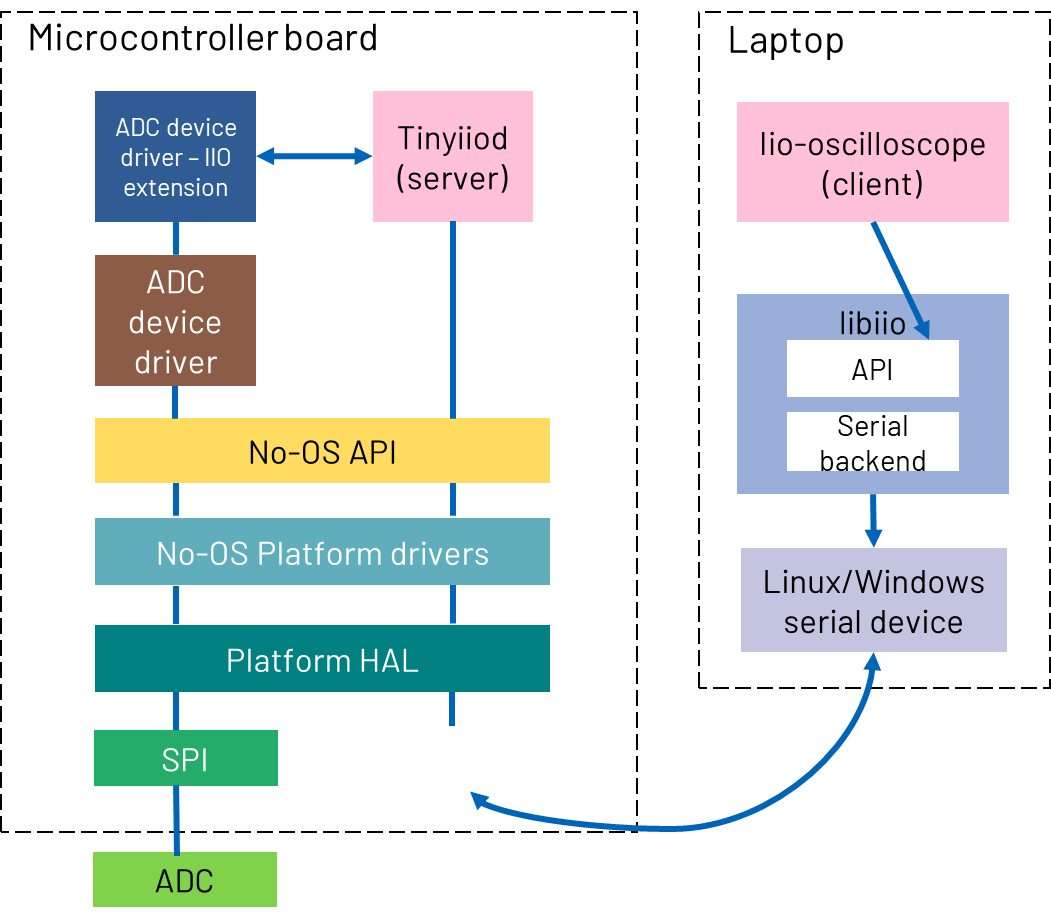
Hands-on activity
By the end of this workshop, you will learn:
Activities
Pre-requisites
Hands-on activity 1
Materials
Hardware setup
Steps
Hands-on activity 2
Theory of operation
Steps:
Results
Challenge
Hands-on activity 3
Materials
Theory of operation
Hardware setup
Steps
Challenge
Slide Deck, booklet and additional materials
Since this tutorial is also designed to be presented as a live, hands-on workshop, a slide deck is provided here:
Download
A complete booklet of the hands-on activity is also provided, as a companion to following the tutorial yourself:
Download
Takeaways
Resources
No-OS Wiki:
Specific hardware resources
no-os-setup?s[]=no&s[]=os#adxl355_driver
Inspiration
